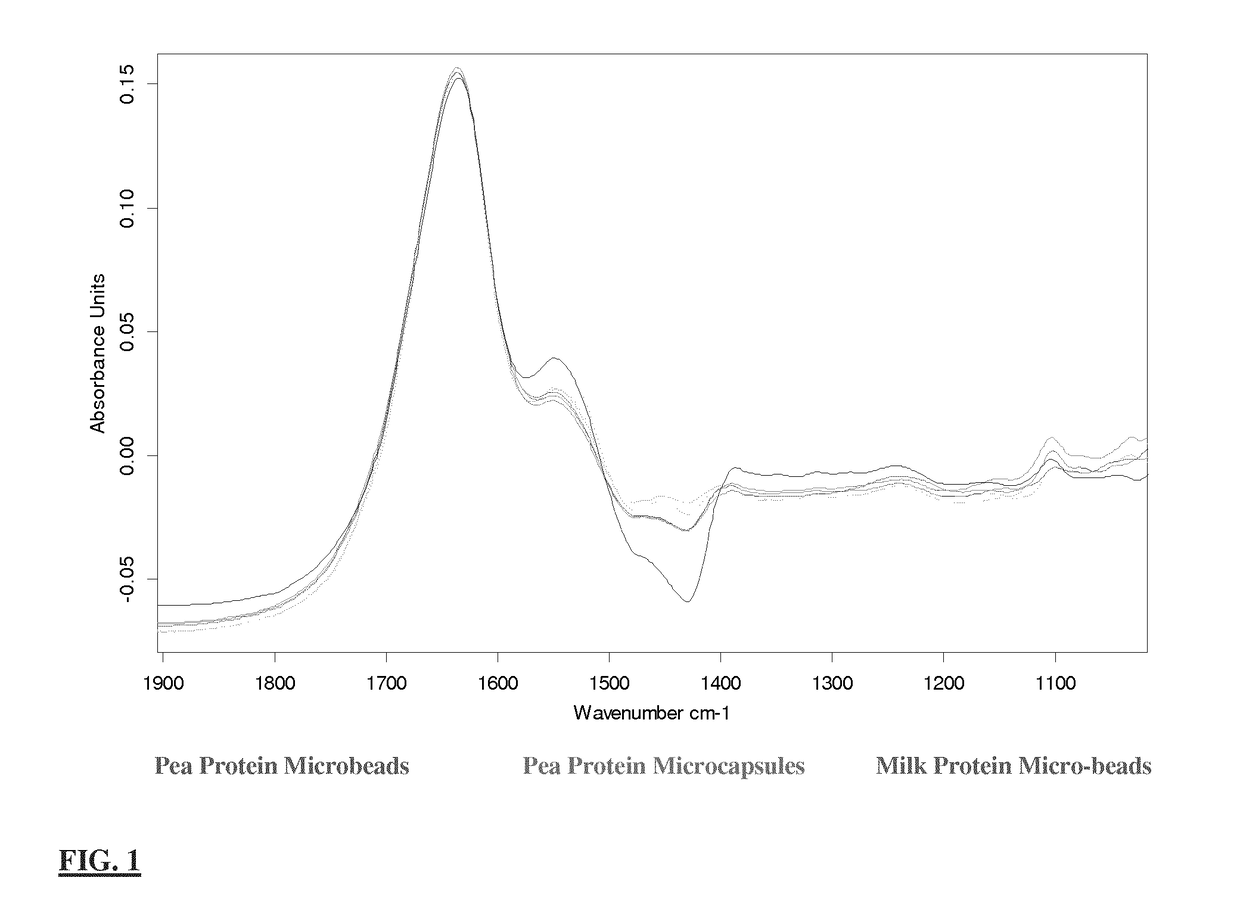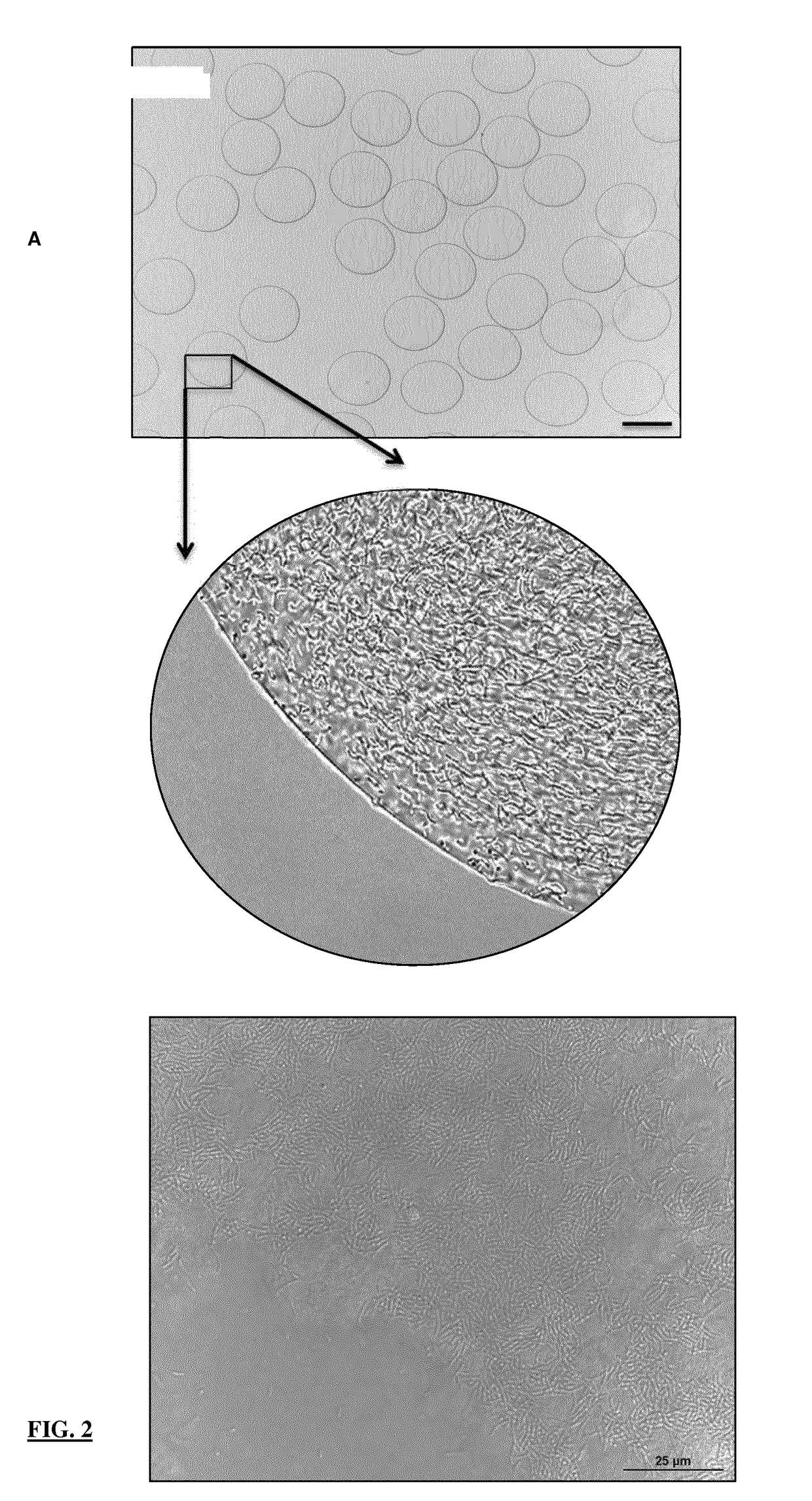A solution of denatured pea protein, and uses thereof to form microparticles
a technology solution, which is applied in the field of denatured pea protein solution, can solve the problems of limited use of plant proteins in the industry, shortfall of animal derived proteins, and loss of a significant amount of products, and achieve the effect of low viscosity
- Summary
- Abstract
- Description
- Claims
- Application Information
AI Technical Summary
Benefits of technology
Problems solved by technology
Method used
Image
Examples
example 1
Formation of Highly Solubilised Denatured Pea Protein Solution (Alkali Solubilisation)
[0078]Prepare pea protein solution in aqueous 0.1 M NaOH to a concentration of 8% w / v (i.e 8 g / 100 ml)
[0079]Ensure that the pH is in the 10.5-11.0 range
[0080]Place the solution into storage for 45 min at room temperature until the protein is fully solubilised
[0081]Adjust to pH 10 using HCl or NaOH / KOH as required
[0082]Heat-treat the solution to a temperature of 85° C. and maintain that temperature for a duration of 25 min.
[0083]After heating cool immediately on slushed ice for 30-45 minutes
[0084]Centrifuge the cooled solution at 10,000×g for 30 minutes at 4° C.
example 2
Formation of Highly Solubilised Denatured Pea Protein Solution (Solubilisation by Sonication)
Sonicator
[0085]Hielscher 1000hd sonicator, currently located near BFE in Teagasc Moorepark.
Procedure
[0086]Hydrate protein in H2O for a minimum of 1 h prior to process.[0087]Adjust to required pH (eg. 7).[0088]Optimum volume for this system is 200-600 ml of sample. Sample beaker should not be overfilled to allow for insertion of sonicator probe.[0089]Place sample beaker on ice prior to procedure.[0090]In room with sonicator, wheel the device to the right corner of room and plug in the black three hole plug to the back of the device.[0091]Place sample in sonicator and adjust height (can use books, glove boxes etc.) so that ¾ of the probe is in the sample.[0092]After ensuring correct ear protection is installed, switch on device using on switch on top right of machine.[0093]Sonicator door does not have to be shut for successful operation.[0094]Power of device can be adjusted using wheel located...
example 3
Microbead Production (Englobbing)
[0099]PURPOSE: For delivery of bioactives to proximal ileum for thermal protection against environmental processing conditions and gastric delivery
[0100]Denatured pea protein solution made according to Example 1 or 2 can be combined with active components i.e. probiotics, colours, etc.
[0101]The dispersion of denatured pea protein solution+active component is extruded through an orifice for free-fall into polymerisation bath
[0102]The polymerisation bath is composed of Citric Acid (0.5M), NaCl (0.3M), (0.4M) and polysorbate 80 (0.01%)
[0103]Optimise the amplitude, and adjust the magnitude of positive charge generate a steady stream of free-falling microdroplets. The polymerisation bath is tempered at 37° C. with a free fall distance of 16 cm from the orifice and an agitation velocity of 90 rpm to allow for instantaneous polymerisation of denatured pea protein solution and active component into microbeads
[0104]The microbeads are allowed to cure in the po...
PUM
 Login to View More
Login to View More Abstract
Description
Claims
Application Information
 Login to View More
Login to View More - R&D
- Intellectual Property
- Life Sciences
- Materials
- Tech Scout
- Unparalleled Data Quality
- Higher Quality Content
- 60% Fewer Hallucinations
Browse by: Latest US Patents, China's latest patents, Technical Efficacy Thesaurus, Application Domain, Technology Topic, Popular Technical Reports.
© 2025 PatSnap. All rights reserved.Legal|Privacy policy|Modern Slavery Act Transparency Statement|Sitemap|About US| Contact US: help@patsnap.com



